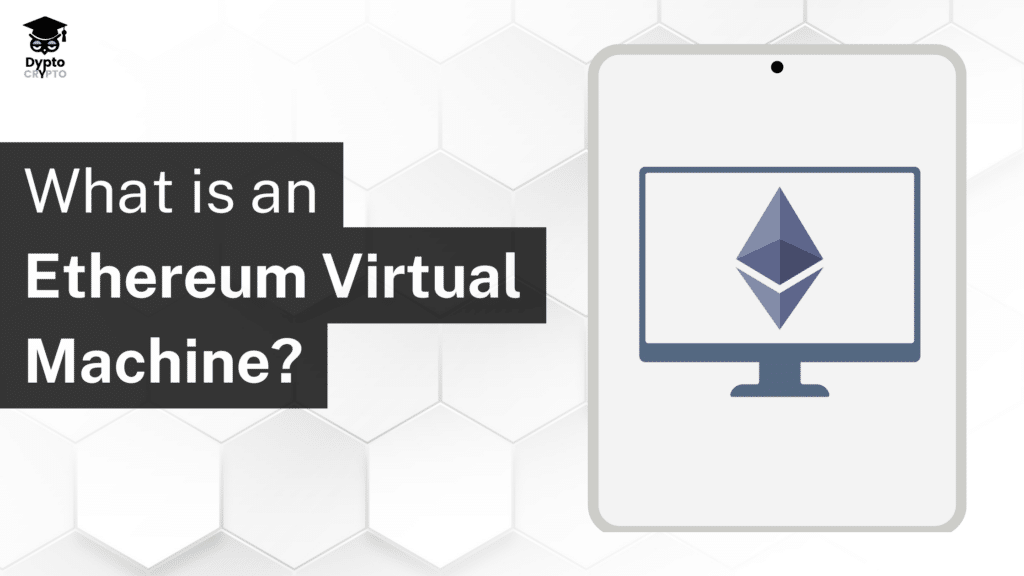What is an Ethereum Virtual Machine?
An Ethereum Virtual Machine is not a physical computer, It is a software application that is used on the Ethereum Blockchain to run smart contracts that automate transactions.
The Long Definition
The EVM is the core of Ethereum’s blockchain architecture. It is in charge of all the computing on the blockchain including Ethereum’s smart contracts, accounts, and dApps.
But it’s not like your regular computational machine. It may be called a machine, but it is very different from a regular HP or Dell computer. This is because while the others are made up of hardware, the EVM is virtual. It is software, yet it accomplishes the same tasks as a computer.
Accordingly, the EVM can process information and perform tasks based on a set of instructions. This is what allows the Ethereum blockchain to execute smart contracts and run decentralized applications (dApps).

How Does the EVM Work and What Does it Do?
The EVM is maintained by thousands of physical computers. Every node (computer) connected to the Ethereum network runs an instance of the virtual machine. Think of it as a global machine that runs on Ethereum’s decentralized hardware infrastructure. This is why it is sometimes referred to as a distributed state machine.
The EVM is defined by the following features:
- Decentralized: The EVM is run by all of Ethereum’s full nodes. This makes it a decentralized computer. To turn it off, you’ll have to turn off every single node in the network.
- Turing complete: Given the necessary instructions, it can solve any computational problem. All computers are Turing complete.
These allow the EVM to accomplish several key functions. The most important one is providing the runtime environment where smart contracts and dApps operate. It allows developers to deploy and execute code on the Ethereum blockchain.
The EVM also defines the rule of changing the state of Ethereum from block to block.
Lastly, the EVM is responsible for Ethereum’s fee mechanism. Since it is a computer, when you interact with the blockchain, you’re giving instructions. For these, the blockchain charges a computational fee, known as gas.

Why is the EVM Important?
A blockchain like Bitcoin can be described as a distributed ledger. It is there to maintain an immutable record of Bitcoin (BTC) transactions. The Ethereum blockchain also does that for ether (ETH) transactions. However, thanks to the EVM, it is also able to do so much more.
The EVM provides an environment for smart contracts and dApps to run. Smart contracts are self-executing agreements on a blockchain. DApps, on the other hand, are decentralized applications that run on a blockchain network.
Through the EVM, developers have been able to create and deploy all kinds of dApps and smart contracts on the Ethereum blockchain. This has allowed the blockchain to transcend being just a record of transactions. Today, it supports an entire ecosystem of decentralized finance (DeFi) products.
Furthermore, the DeFi space on Ethereum includes decentralized exchanges (DEXs), decentralized autonomous organizations (DAOs), NFT marketplaces, and decentralized lending platforms.
Drawbacks of the EVM
The biggest drawback of the EVM is the high gas fees. Generally, running a smart contract on the Ethereum network is costly. And the more complex the smart contract, the more it will cost to run it.
Fortunately, there is a workaround for this problem. Some other blockchain protocols, like Fantom, Arbitrum, Polygon, and Binance Smart Chain (BSC) are EVM-compatible. This means they can run and execute Ethereum smart contracts. But unlike Ethereum, they are quite scalable, which makes them cheaper to use.
Want to join the Dypto journey? Follow our socials!